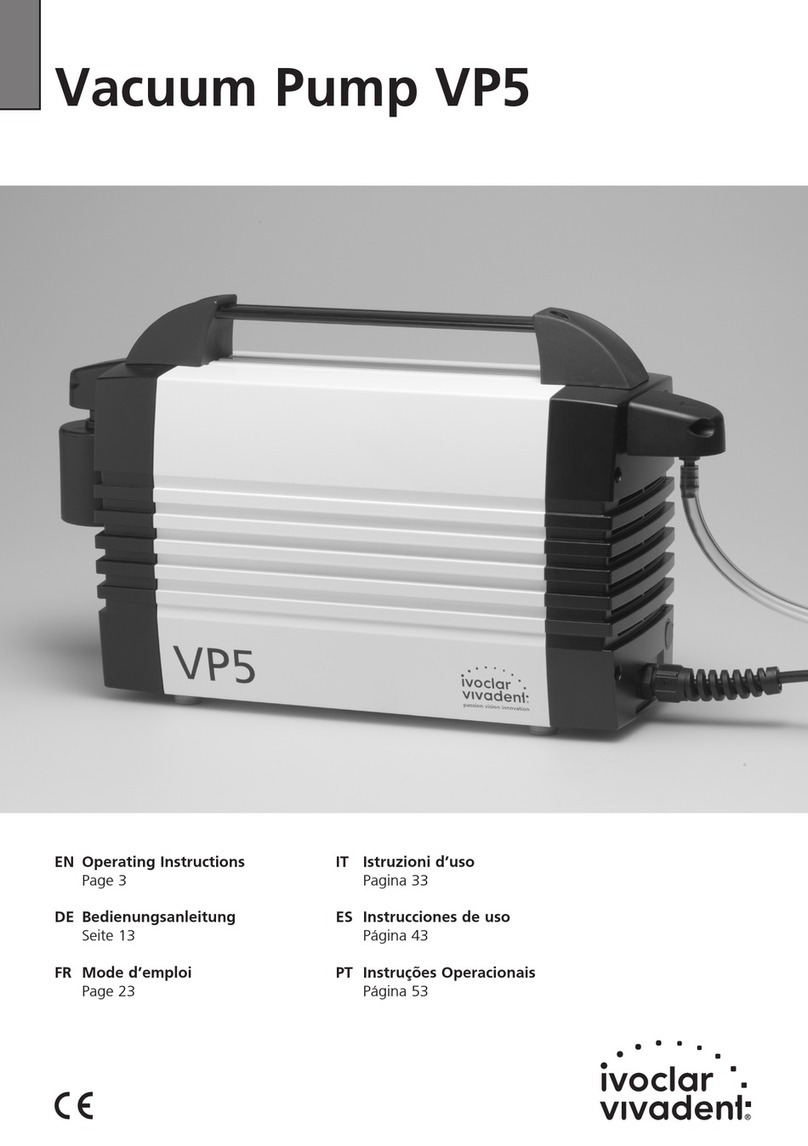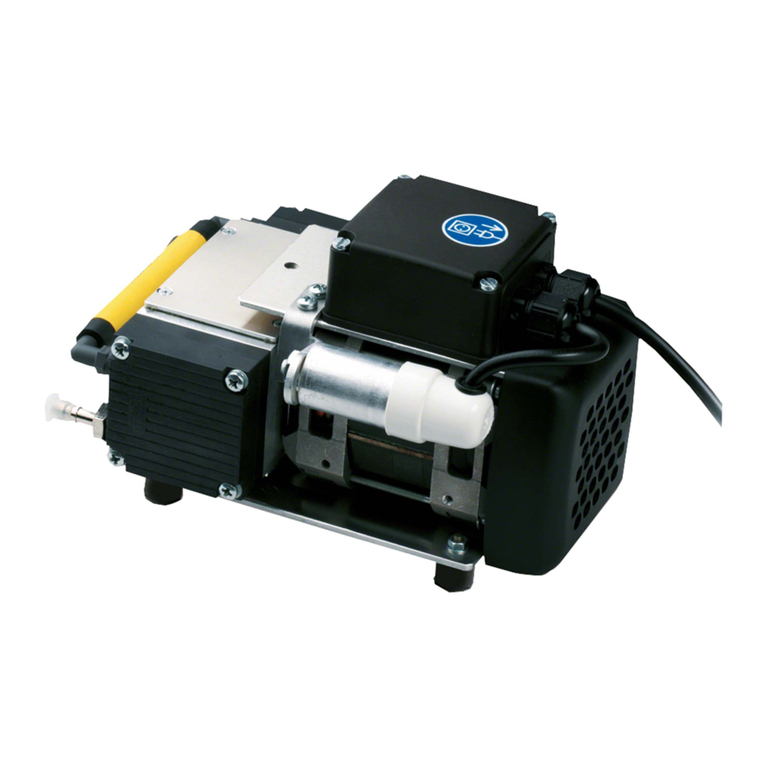6
2. Safety First
This chapter is especially important for personnel who
work with the VP 4 Vacuum Pump or who have to carry
out maintenance or repair work. This chapter must be
read and the corresponding instructions followed.
2.1 Indications
This vacuum pump has been developed especially for the
evacuation of Programat ceramic furnaces from Ivoclar
Vivadent and it should be used for this purpose only.
Other uses than the ones stipulated are contraindicated.
The manufacturer does not assume any liability for
damage resulting from misuse. The user is solely
responsible for any risk resulting from failure to observe
these Instructions.
Further instructions to assureproper use of the pump:
– The instructions, regulations, and notes in the vacuum
pump Operating Instructions must be observed.
– The pump must be operated under the indicated
environmental and operating conditions (Chapter 9).
– The VP 4 must be properly maintained.
2.1.1
Risks and
dangers
Foreign objects or liquids
must not enter the air vents,
since this may block the
motor or result in an
electrical shock.
2.1.2
Risks and
dangers
The connection cover must
not be opened while the
pump is connected to the
power socket, since this may
result in an electrical shock.
The connection cover may
only be opened by the
personnel of a certified Ivoclar Vivadent Service Center.
2.2 Health and Safety Instructions
– Make sure that the pump is only used for the
indications stipulated in these Operating Instructions.
– Do not use the pump in areas where there is an
explosion hazard.
– Components connected with the pump must comply
with the pneumatic data of the pump.
– Observe the corresponding safety regulations when
connecting the pump to the electronic network.
– If the operation of the pump is interrupted by the
thermoswitch because of over-heating, the pump
starts automatically once it has cooled down. Make
sure that no danger results from such an incidence.
– Observe the corresponding safety instructions for the
media used.
– Use only original spare parts.
– The pump complies with the safety regulations of the
following EC guidelines:
73/23 EEC (low voltage guideline)
89/336/EEC (electromagnetic compatibility)
– If the pump has been stored at very low temperatures
or high atmospheric humidity,the pump has to be
dried or left to adjust to the room temperature for
approx. 1 hour (do not connect to the power yet).
Do not work with liquids near the pump.
Should a liquid accidentally enter the pump,
disconnect power and consult Customer
Service. Do not operate the pump
– The pump is tested for use at altitudes of up to
2000 m above sea level.
– The furnace may only be used indoors.
– The unit must not be technically modified.
The connection cover, which is marked with the label
shown below, may only be opened once the power has
been disconnected (interruption of the power supply)
by qualified service personnel. Please observe the rele-
vant rules and regulations, as well as other recognized
safety and medical regulations.





























